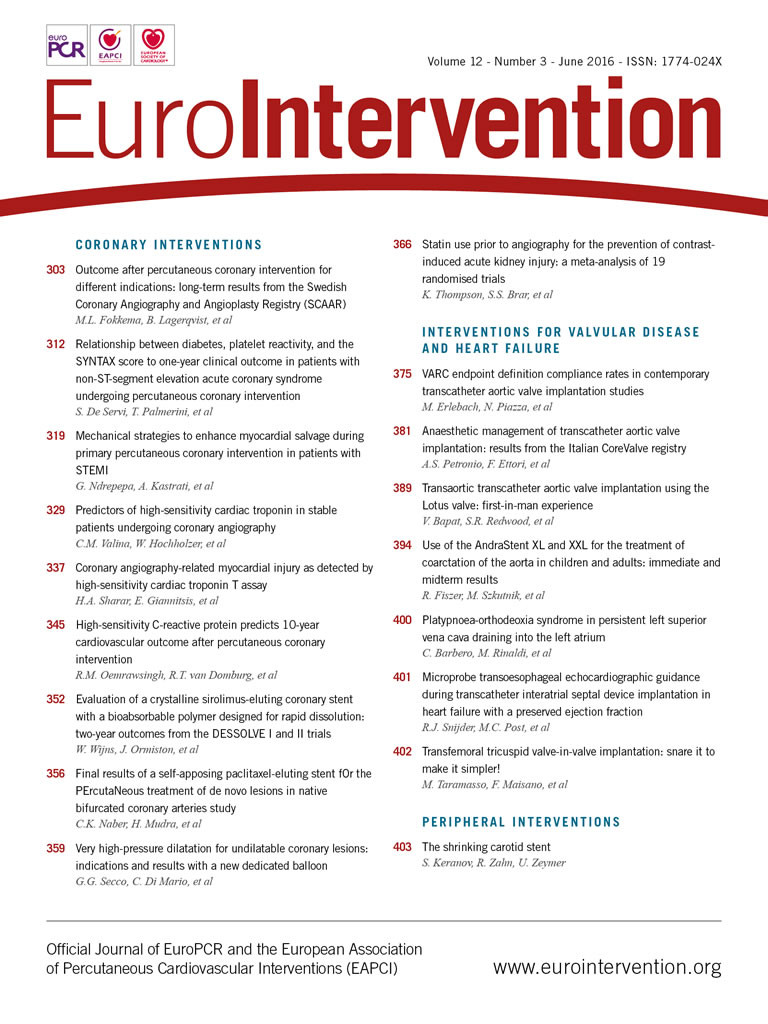
We read with great interest the manuscript of de Waha et al1. The authors have to be congratulated for performing clinical research in this very challenging subset of patients.
In a series of 83 (consecutive?) patients with refractory cardiogenic shock (CS) undergoing extracorporeal life support (ECLS), they describe an in-hospital mortality of 68.7%, while at 18 months the survival was 18.1%. While the poor prognosis of patients with refractory CS is undeniable, a few points deserve consideration to put these results into perspective. First, the limited number of patients and the variety of underlying pathologies may have masked subgroups which may have derived greater benefit from ECLS. Accordingly, successful examples of ECLS employment have been described in acute myocardial infarction-related CS2,3, massive pulmonary embolism4, malignant refractory arrhythmia5, severe hypothermia6 and severe cardiotoxic drug intoxications7,8.
Second, a non-negligible proportion of patients were aged >65 years, which is regarded in some centres as an upper age limit for ECLS implantation, among other reasons because of the impossibility in some countries to offer a “destination therapy” or heart transplantation if ECLS cannot be weaned. In this respect, we wonder if an age cut-off of 75 years is clinically relevant (Figure2 in the original article), as the SAVE9 and ENCOURAGE scores10 reported age >60 and >63 as an independent predictor of in-hospital mortality, respectively.
Third, timing of ECLS implantation and criteria for explantation may be critical. Case series studies suggest a survival advantage from the early use of ECLS, particularly in myocardial infarction-related CS2,3. Moreover, it would have been important to mention the weaning parameters used to guide ECLS explantation, as they are crucial in order to wean patients successfully from the device11. Fourth, while 26.9% and 15.7% of patients presented in-hospital and out-of-hospital cardiac arrest, respectively, the authors did not mention what proportion of patients was still in cardiac arrest at the time of ECLS implantation, a condition associated with dismal outcomes12.
With regard to more technical aspects, operators removed the intra-aortic balloon pump at the ECLS implantation, despite the potential benefits on left ventricular afterload reduction and pulsatility restoration13. In addition, the cannulae inserted were 18 Fr arterial and 22 Fr venous, leading, according to the authors, to an ECLS blood flow of between 3 and 4 L/min. In our experience, an arterial cannula of 19 Fr and a venous one of 25 Fr allows in most cases at least 5 L/min ECLS blood flow. However, we do acknowledge that the impact of intra-aortic balloon pump or cannula size on clinical outcomes in patients on ECLS has never been adequately addressed. Despite the limitations, we would like to congratulate de Waha et al for performing clinical research in this very challenging subset of patients. The sobering results with respect to survival may be the expression of a lack of adequate criteria to determine which patients may benefit most from ECLS. This is one of the major challenges in the field, together with the execution of a randomised controlled trial.
Conflict of interest statement
The authors have no conflicts of interest to declare.

